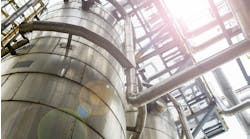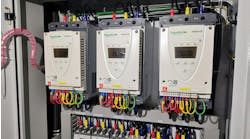Many of my clients are just starting their decarbonization roadmaps. Often, they set ambitious goals for 2030 and 2050 to achieve net zero. The first step in their strategy is always energy efficiency improvements, which normally leads to reduced emissions. However, you should avoid investing in technologies that still burn fossil fuels, even if they improve energy efficiency.
Twenty years ago, when completing energy audits for refineries, I often assessed — after calculating and running a detailed utility system model — that a cogeneration unit would satisfy power and steam demands in the most energy-efficient way. On a solely economic basis, this would still be the case. The unit would reduce the operating cost for energy imports, making the refinery independent from external electricity and steam service providers.
Today, I would hesitate to recommend such a solution. A cogeneration unit still burns fossil fuels, and its carbon emissions are difficult to capture and use or sequester. It is possible to add green or blue hydrogen (if available) to the cogeneration fuel, but the concentration of hydrogen has limitations. A significant amount of research exists on gas turbines that use green and blue fuel sources, such as hydrogen and ammonia, but this technology is still premature. Also, most industrial complexes lack access to the limited supply of green and blue fuels.
Before continuing, let’s clarify some decarbonization terminology. Decarbonization projects follow what carbon accountants phrase as Scope 1, Scope 2 and Scope 3 projects — a group of standards used for greenhouse gas (GHG) accounting known as the GHG Protocol.
Predicting emissions reduction trends is difficult.
Scope 1 emissions include all GHG emissions that result from within the company’s operations. Most of these emissions emerge from burning fossil fuels in gas turbines, heaters, boilers, flares, incinerators and more. Scope 1 also encompasses other emissions, like fugitive emissions of light hydrocarbons from flanges and valves. Energy efficiency projects, flaring reductions, and carbon capture and storage (CCS) or carbon capture and utilization (CCU) projects will reduce these emissions.
Scope 2 emissions include emissions indirectly generated by the company by importing energy such as power, steam and other heating and cooling sources, all of which are generated by fossil fuels and increase GHG emissions. While Scope 2 includes power from a coal or gas-fired power plant or steam from the nearby power plant, it excludes the import of fossil fuels, as that contributes to Scope 1 emissions. In my column, “Take Advantage of the Inflation Reduction Act,” I discussed green, blue and possibly pink electricity to deal with Scope 2 emissions. These are available in abundance in some areas and countries at competitive costs compared to the ‘grey’ electricity conventional fuel-fired power plants produce.
Scope 3 emissions are emissions from the supply chain. These emissions surface from the feedstock you buy, whether that is a renewable feedstock such as corn oil or wood chips or even a fossil feedstock like crude oil. The products you produce, depending on the nature of this feedstock, may or may not count toward Scope 3 emissions. For example, aviation fuel made from corn oil is considered renewable fuel and reports net-zero emissions. However, the same aviation fuel derived from crude oil generates net CO2 emissions once it is used. In many cases, companies refer only to Scopes 1 and 2 emissions when they commit to net zero.
Now, returning to our example, the cogeneration unit requires imported natural gas which will contribute to Scope 1 emissions. The alternative is to import green electricity from renewable sources and produce steam from (partially) green hydrogen-fired boilers without building the cogeneration unit. Twenty years ago, the first option would improve energy efficiency. However, with the current scope definitions of the GHG Protocol, the roadmap toward net zero suggests importing the renewable energy and hydrogen while canceling the cogeneration project.
Today, predicting emissions reduction trends in the chemical industry is difficult. Many companies have committed to net zero in their annual reports, but the journey is far from over. Technology development in renewable energy sources, carbon capture, carbon utilization, renewable fuels and many Scope 3 projects are still in their early stages. So, I recommend improving energy efficiency as the first step on your decarbonization roadmap. Then, consider your criteria for intensive capital energy efficiency projects to avoid any regretful investments.



